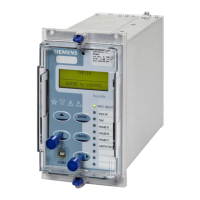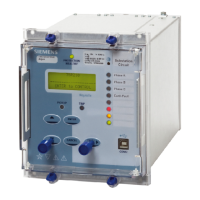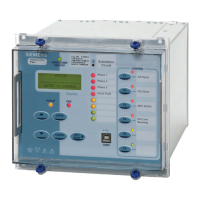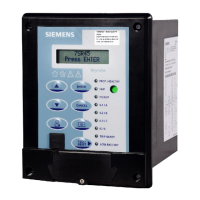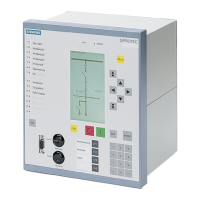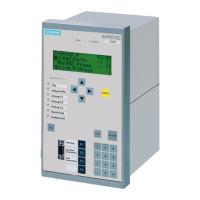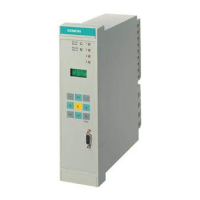7SR18 Applications Guide
Unrestricted Page 22 of 63 ©2018 Siemens Protection Devices Limited
4.4 CT Formulae PX Class
The minimum knee-point voltage of the CT’s is dependent on the settings used:
With Bias Slope 2 = 150% and Bias Break Point = 2 x I
N
1805.06.0 ≤××
+=
R
X
forRsI
R
X
V FMk
2518183.05.1 ≤<××
−+=
R
X
forRsI
R
X
V FMk
252508.06.3 >××
−+=
R
X
forRsI
R
X
V FMk
With Bias Slope 2 = 150% and Bias Break Point = 1 x I
N
151 ≤××=
X
forRsIV FMk
30151513.00.1 ≤<××
−+=
R
X
forRsI
R
X
V FMk
3030033.095.2 >××
−+=
R
X
forRsI
R
X
V FMk
With Bias Slope 2 = 150% and Bias Break Point = 0.5 x I
N
201 ≤××=
X
forRsIV FMk
302020135.00.1 ≤<××
−+=
R
X
forRsI
R
X
V FMk
3030029.035.2 >××
−+=
R
X
forRsI
R
X
V FMk
Where: -
V
k
- is the knee-point voltage of the CT defined as the point where a 10% increase in excitation voltage produces
a 50% increase in magnetising or excitation current.
X/R- is the system reactance to resistance ratio for a three-phase through-fault on the protected feeder.
I
FM
- is the feeder maximum primary three-phase through-fault current referred to the secondary side.
R
S
- is the total resistive burden of the secondary circuit, including CT secondary winding, relay phase input and
lead loop resistance.
The above formulae include a minimum safety margin in excess of 120%. This may be utilised if the CT’s
calculated above are too large to fit in the Circuit Breaker chamber. Therefore a 120% reduction may be made to
the above minimum knee-point requirements. This margin is present, as the above expressions were based on
tests using the saturation e.m.f (E
sat
) level of the CT. As the knee-point voltage (Vk) of the CT is a measurable
constant, this was instead of E
sat
in the expression above. E
sat
is always at between 120% and 160% of the knee-
point voltage Vk and therefore reducing the Vk calculated above by up to 20% is valid.
The above expressions are derived from system conjunctive tests and power system simulations. The lower the
Bias Break Point setting becomes the greater the level of saturation that may be tolerated as is shown in the
following figure. This must be offset against fault sensitivity for load bias that may continue during an internal
earth-fault on resistance earthed power systems.
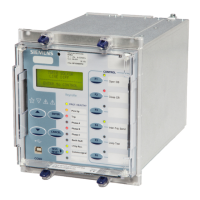
